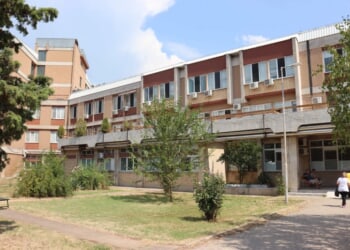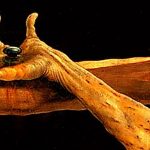By the time World War II began in Asia, both the Mitsubishi K-1 and K-2 were considered obsolete.
During World War II, Imperial Japan had its fair share of success with multiengine bombers, though not to the degree that its Axis partner Nazi Germany did (see the Junkers Ju 88 and Heinkel He 111) and certainly not to the degree that the Allies did (America’s B-17 Flying Fortress, B-24 Liberator, and B-29 Superfortress; Great Britain’s Avro Lancaster and Handley Paige Halifax).
Arguably Japan’s most successful multi-engine bomber was the twin-engine G4M Hamaki (“Cigar”) (Allied reporting name: “Betty”); built by the same Mitsubishi Heavy Industries conglomerate that produced the legendary A6M Zero fighter, the “Betty” pulled off feats such as the sinking of the Royal Navy battleship HMS Prince of Wales and the battlecruiser HMS Repulse.
However, before the Hamaki, Mitsubishi built a couple of other twin-engine bombers that were a brief proverbial “flash in the pan” in terms of combat success but soon languished into obsolescence and relative obscurity: the Ki-1 and Ki-2 (Allied reporting name: “Louise”).
The Preliminaries
The inspiration for this article comes from the Rex’s Hangar channel of MSN, specifically a video posted on or about April 8, 2025, titled “Japan’s Failed Copycat Bombers | Mitsubishi Ki-1 & Ki-2.” As noted by the text caption accompanying the video:
“Today we’re looking at the Mitsubishi Ki-1 and Ki-2, a pair of bombers that were based off the Junkers K-37. These rather blocky machines were obsolete within a few years owing to the rapid advancements in aviation technology in the early and mid 1930s.”
The narrator expands on this by noting that the Junkers K-37 (aka the S 36) was imported from Sweden (though Junkers was a German aircraft firm, further development on this particular aircraft was carried out in the Scandinavian country) in February 1931 and donated to the Imperial Japanese Army Air Service (IJAAS) by domestic benefactors “as a patriotic gift.” He adds that “This was part of an extensive program to financially stimulate the growth and development of aviation technology within the country.”
The IJAAS brass took that stimulation effort and got to work designing two homegrown bombers inspired by the K-37 (though the second one would end up bearing a stronger cosmetic resemblance to the German-Swedish plane than the first one).
Mitsubishi Ki-1 and Ki-2 History and Specifications
As might be guessed from the alphanumeric sequence, the Ki-1 came along first, making its maiden flight in August 1932 and entering official operational service the following year, receiving the formal IJAAS designation of “Mitsubishi Army Type 93 Heavy Bomber” (as far as I can ascertain, the Ki-1 never received an Allied reporting nickname like the Ki-2 “Louise” did).
Tech specs and vital stats of the “Heavy” warbird (courtesy of the Pacific Eagles) were as follows:
- Crew: Four (Pilot, co-pilot, two gunners)
- Fuselage Length: 48 ft 7 in
- Wingspan: 86 ft 11in
- Height: 16 ft 2in
- Empty Weight: 10,759 lbs.
- Max Takeoff Weight: 17,857 lbs.
- Powerplant: Two Mitsubishi Ha2-3 (970hp)
- Max Airspeed: 140 mph
- Range: (Not provided)
- Service Ceiling: 16,400 feet
- Armament:
- Guns: Three 7.7mm machine guns (per Rex’s Hangar, “one mounted on a flexible mount in the nose, another in the rear gunner stationed, and the third in a retractable ventral position”)
- Bombs: 1,500 kg (3,306.9 lb.) payload
A total of Ki-1 118 airframes were built.
As for the Ki-2, it was considered a light bomber instead of a heavy bomber, hence the official IJAAS designation of “Army Type 93 Twin-engine Light Bomber,” which gets a tad confusing in light of the fact that the “Heavy” Ki-1 was also designated “Type 93.” The “Light” warbird made its own maiden flight in May 1933. How much lighter was it? Once again, we turn to Pacific Eagles:
- Crew: Three (Pilot, co-pilot/navigator, radioman)
- Fuselage Length: 41 ft 4in
- Wingspan: 65 ft 6in
- Height: 15 ft 2in
- Empty Weight: 6,173 lbs.
- Max Takeoff Weight: 9,921 lbs.
- Powerplant: Two Mitsubishi Ha8, 750hp
- Max Airspeed: 176 mph
- Range: 560 miles
- Service Ceiling: 23,000 feet
- Armament:
- Guns: Two 7.7mm machine guns (in an enclosed nose turret)
- Bombs: 500 kg (1,100 lb.) payload
Pacific Eagles adds that “The Mitsubishi Ki-2, unlike the Ki-1, actually had a lot in common with the K37. It was roughly the same size and weight of the parent design, and featured the distinctive corrugated wings that also appeared on the Junkers Ju52 transport plane.”
A total of 187 Ki-2 airframes were assembled.
Operational History and Performance
So then, how did these two Mitsubishis perform in combat? Both saw initial success during counterinsurgency operations in Imperial Japan’s so-called Pacification of Manchukuo (a campaign that ran from 1932 to 1942), when the bombers faced little if any opposition from enemy fighter planes. However, by the time the Second Sino-Japanese War (1937-1945)—considered the beginning of WWII in Asia—kicked off, both planes were considered obsolete.
The Ki-1 did conduct some bombing missions over northern China in early 1938 but was completely withdrawn from frontline service later that year. Rex’s Hangar adds that it was “not particularly well-liked by its crews … Many were either destroyed on the ground or overwhelmed by fighters sent in to intercept them.”
Meanwhile, the Ki-2 was withdrawn from frontline service by the time of the Pearl Harbor raid. For the sake of fairness and balance, Rex’s Hangar notes that “the Ki-2s were liked by their pilots and their crews far more than the cumbersome Ki-1.” At least two squadrons of “Louises” played an active role in the Battle of Xuzhou (March 24, 1938-May 1, 1938). However, just like their heavier counterparts, many of these light bombers ended up being destroyed on the ground and in the air.
Both planes would supplanted by the Italian-made Fiat BR.20 Cicogna (“Stork”) as a stopgap measure, followed by the Mitsubishi Ki-21 “Type 97 Heavy Bomber” (Allied reporting names “Sally/Gwen”).
Where Are They Now?
Not Applicable. As far as I have been able to ascertain, no Ki-1s or Ki-2s were preserved for museum posterity after the war.
About the Author: Christian D. Orr
Christian D. Orr was previously a Senior Defense Editor for National Security Journal (NSJ) and 19FortyFive. He is a former Air Force Security Forces officer, Federal law enforcement officer, and private military contractor (with assignments worked in Iraq, the United Arab Emirates, Kosovo, Japan, Germany, and the Pentagon). Chris holds a B.A. in International Relations from the University of Southern California (USC) and an M.A. in Intelligence Studies (concentration in Terrorism Studies) from American Military University (AMU). He has also been published in The Daily Torch, The Journal of Intelligence and Cyber Security, and Simple Flying. Last but not least, he is a Companion of the Order of the Naval Order of the United States (NOUS). If you’d like to pick his brain further, you can ofttimes find him at the Old Virginia Tobacco Company (OVTC) lounge in Manassas, Virginia, partaking of fine stogies and good quality human camaraderie.
Image: Wikimedia Commons.


















